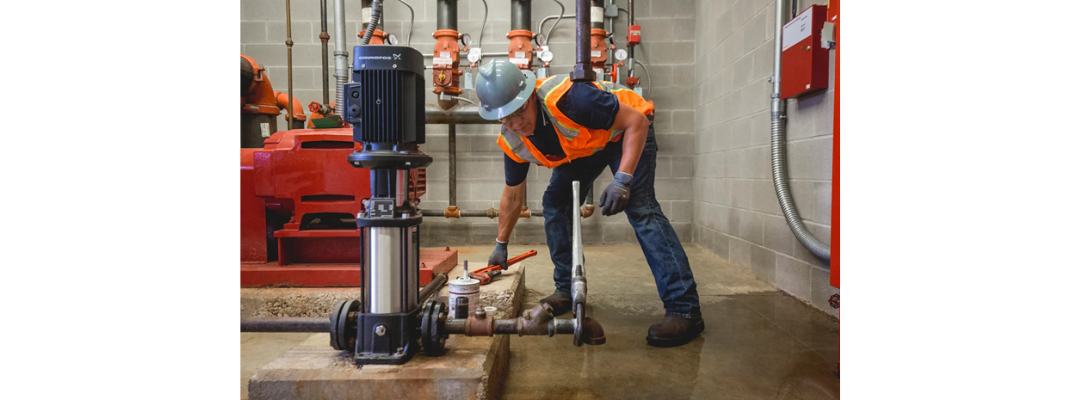Vertical multistage fire pumps are essential components of fire protection systems, designed to efficiently deliver high-pressure water to combat fires. While they are generally reliable, these pumps can encounter a range of problems that may affect their performance and operational efficiency. Understanding these issues and their potential solutions can help ensure effective firefighting capabilities. Below are some common problems associated with vertical multistage fire pumps, along with insights into their causes and remedies.
Cavitation
Cavitation occurs when vapor bubbles form in a liquid due to localized pressure drops, leading to potential damage as these bubbles collapse. In vertical multistage pumps, cavitation can manifest as unusual noises and vibrations, ultimately damaging impellers and other components.
Causes:
• Inadequate inlet pressure.
• High system temperatures.
• Excessive pump speeds.
Solutions:
• Ensure that the inlet pressure is maintained above the Net Positive Suction Head Required (NPSHR).
• Regularly check and maintain the pump’s operating conditions, avoiding excessive speeds.
Poor Priming
Priming issues can occur when air is trapped in the pump casing, preventing it from establishing a proper suction. This can lead to inefficient performance or, in severe cases, pump failure.
Causes:
• Incorrect installation or alignment of the pump.
• Leaks in the suction line or at the pump inlet.
• Low liquid levels in the supply tank.
Solutions:
• Regular inspection of the suction line for leaks.
• Ensure that the pump is installed according to the manufacturer’s specifications.
• Monitor liquid levels in supply tanks.
Overheating
Overheating can lead to serious damage, including seal failure and reduced pump efficiency. This issue is typically related to extended operation at insufficient flow rates or mechanical fault conditions.
Causes:
• Viscosity changes in the liquid being pumped.
• Continuous operation at a very low flow rate.
• Impeller and motor failures.
Solutions:
• Monitor the pump’s flow conditions and avoid low-flow operation.
• Ensure proper cooling mechanisms are in place, such as efficient water flow and ventilation.
• Regular maintenance checks to identify any mechanical abnormalities.
Seal Failures
Seals are critical for maintaining the pump’s integrity and preventing leakage. Seal failures can lead to significant water loss and can compromise the pump’s overall effectiveness.
Causes:
• Excessive vibration and wear.
• Incorrect installation.
• Deterioration due to environmental factors, such as temperature extremes.
Solutions:
• Utilize high-quality seals suited for the specific fluid being pumped.
• Implement regular maintenance and inspections to ensure seals are functioning correctly.
• Correctly align and install components to minimize vibration.
Electrical Issues
Electrical problems in vertical multistage fire pumps can directly affect operation, leading to unexpected shutdowns or inefficiencies. These issues can arise from various sources, including faulty connections or motor failures.
Causes:
• Loose or corroded electrical connections.
• Improperly sized or rated motors.
• Voltage fluctuations in the power supply.
Solutions:
• Conduct routine electrical inspections, tightening loose connections and replacing corroded components as necessary.
• Ensure the motor is appropriately sized for the pump’s requirements.
• Implement surge protection devices to safeguard against voltage fluctuations.
Corrosion and Wear
Corrosion and wear can lead to significant impairment of pump performance and lifespan. The materials used in the pump’s construction can degrade over time, leading to decreased efficiency.
Causes:
• Poor-quality materials not suited for the application.
• Incompatible fluids being pumped.
• Environmental exposure to corrosive agents.
Solutions:
• Utilize materials specifically designed to resist the specific properties of the pumped fluid.
• Regularly inspect and maintain all pump components for signs of corrosion or wear.
• Implement protective measures against environmental factors.
Conclusion
Understanding the common problems associated with vertical multistage fire pumps is crucial for maintaining a reliable fire protection system. Timely identification and addressing of these issues—through regular maintenance, monitoring, and adherence to manufacturer guidelines—can significantly enhance the pump’s operational reliability and efficiency. By investing in proper care and understanding the intricacies of these pumps, facility managers and fire protection professionals can ensure a prompt and effective response in the event of a fire emergency.

